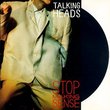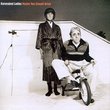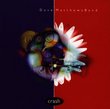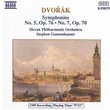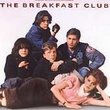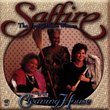| All Artists: Beethoven, Norrington Title: Symphonies 1-9 Members Wishing: 0 Total Copies: 0 Label: Angel Records Release Date: 5/15/1990 Genre: Classical Styles: Ballets & Dances, Ballets, Historical Periods, Classical (c.1770-1830), Symphonies Number of Discs: 6 SwapaCD Credits: 6 UPC: 077774985222 |
Search - Beethoven, Norrington :: Symphonies 1-9
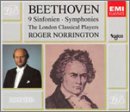 | Beethoven, Norrington Symphonies 1-9 Genre: Classical
It's hard to listen to zillions of recordings of the same music without becoming jaded. It's a problem that every classical music critic faces, and so it's understandable that there is always a tendency to welcome a new ve... more » |
Larger Image |
CD DetailsSynopsis
Amazon.com It's hard to listen to zillions of recordings of the same music without becoming jaded. It's a problem that every classical music critic faces, and so it's understandable that there is always a tendency to welcome a new version of some standard repertoire with open arms just because it sounds different--even if the difference is musically dubious at best. Add to this general problem a healthy dose of provincial nationalism, plus a cozy relationship with both the performers and their record labels, and the result is a recipe that explains the success of Roger Norrington's Beethoven in the English musical press. And now that you've been warned, you can recognize it as the musically empty experience that it is--a novelty whose charm has worn off, and nothing more. For real Beethoven stick with George Szell on Sony--or any number of other conductors and recordings. --David Hurwitz Similar CDsSimilarly Requested CDs
|
Member CD ReviewsReviewed on 1/15/2009... This is an incorrect listing. This is actually a 6 CD set, not 1! Unfortunately, Swap a CD is not going to change this listing. If you want this you'll probably have to look in the CD Bazaar.
CD ReviewsUr-text of Historical Beethoven 02/01/1999 (5 out of 5 stars) ""The purpose of playing Beethoven on old instruments is to make him sound new." Roger NorringtonThis is the cycle that signaled the break with the past by a new view of Beethoven - Beethoven the classicist, Beethoven the forceful - Beethoven the master of tempo and speed. On Beethoven's scores there are tempo markings. Because of the style of performance invented by Wagner in the 1860' - the style which is the basis for almost all orchestral performing tradition - no one dared play many of the sections as fast as Beethoven clearly marked them. All sorts of excuses were offered - "He couldn't hear." "His metronome was faulty." "He didn't mean it."Norrington took Beethoven at his word, but what is more, realised that Beethoven wrote for specific playing styles - lengths of phrase and kind of string attack. Yes, it would be wrong to play Beethoven in the traditional way at these markings - but it would be right< to play Beethoven in the style of Beethoven's time, on the instruments of Beethoven's time, at the tempi he envisioned.The result is the music with the old layers of varnish stripped off. Instead of a well mannered orderly Beethoven - there is a Beethoven who shakes and shocks, attacks and hammers. A Beethoven who swings with dance, shakes the orchestra with rumbling fragments.The place this strikes most clearly is in the slow movements - the Andente of the VIIth, the Funeral March of the IIIrd, the Adagios of the first two symphonies. The Funeral March becomes a twisting torrent of rage and frustration - of hopelessness at a world where the center has been stripped from it. The pulsing movement of the VIIth Andente becomes a stately dance from an archaic world of tresses and bodices, of swirling choreographed motion where the partners are forbidden to touch, and yet yearn for it. It becomes about the pulsing need for another.In the dance movements - the scherzi - this rhythmic drive transforms them in another way - by making the pulse quicker - it is also lighter. The hero's spirit is freed in "Eroica". The fifth becomes a march of a great army to dark battlements, and recalls "Childe Harolde to Dark Tower Came" - the prince overwhelming the thicket of thorns.The Allegro was defined at the time as "the rhythmic outpouring of a thematic idea" - here that propulsion is restored. Moments fly by, and we remember them, long for their return for they are taken from us. Repeats come back into balance, the massive symmetries of his middle period become architecturally clear.All other period cycles - Harnancourt, Gardiner, Goodman - begin here, from this one. This is the storming of the Bastille that begins the revolution." Uniquely passionate performances... M. R. Simpson | St. Davids, PA | 04/13/2008 (5 out of 5 stars) "I strongly disagree with the Amazon reviewer concerning his comment about how "musically empty" this set is. I find Norrington's performances of the 2nd, 3rd, 4th, 5th, 7th, and 8th symphonies to be exceptionally well-conceived, full of passion--as Beethoven would have wanted--and largely faithful to the original scores. Admittedly, later sets by Bruggen and Gardiner may be more consistently well-played than this set, but you could say that about many of pioneering period performances from the 1980s--including even Pinnock's critically acclaimed Brandenburg Concertos, or Hogwood's groundbreaking set of Mozart symphonies, and to do so misses the point. What was so exciting about the early days of the period movement was the extraordinary sense of musical discovery that these performances brought to both listeners and musicians alike--regarding the original scores. As much as I loved my Karl Bohm recordings of Mozart symphonies, the first time that I heard Hogwood's recording of the "Prague" symphony was a revelation. No longer would Bohm's rather Brahmsian approach to these works suffice--clearly, this approach was not what Mozart had in mind. Indeed, it was as if I was hearing Mozart for the very first time. Yes, generally speaking, higher standards of performance were later attained, but there is still something remarkably exciting about many of these early recordings--whatever their flaws may be--and we shouldn't forget that, or how daringly new they were at the time.
One of the most fascinating recording projects of this period was Sir Roger Norrington's pioneering set of Beethoven symphonies with The London Classical Players. Here at long last--after a century and a half of neglect--was a conductor bravely determined to conduct these symphonies according to Beethoven's difficult metronome markings, and as played on the original instruments that Beethoven had composed for--that is, the very sounds that he must have had in his mind when he wrote this music down. Norrington astutely saw that Beethoven's original brass and percussion instruments play a crucially prominent role in these symphonies, and most importantly, that they cannot be tempered without diminishing the passionate intensity of the music itself. Thus, not only does Norrington faithfully adhere to the original scores and markings--come what may, but again and again throughout these performances, he encourages the brass and percussion sections to play full out--at their utmost intensity, and it is truly magnificent. (Finally a conductor who understands.) However, that is not to say I loved everything about this set--I was disappointed with the 9th symphony, which can sound surprisingly cautious at times. Gardiner's superlative account on Archiv is a better choice here. And the 1st symphony could have been a little more lightly sprung in places--Bruggen is perhaps preferrable. Yet, none of the period conductors--with the exception of Norrington--were able to achieve the critical transition that occurs late in the 3rd movement of the 5th symphony--where the power of the human will triumphs over despair and suffering, if you will. Those listeners who insist on the highest standards of period instrument playing will probably remain happiest with their Gardiner or Bruggen sets, and that is fine, but they will be missing something. Because more than any other Beethoven cycle, this one uniquely shows us just how much Beethoven used and adored the brass and percussion instruments of his day, and the sublime potential that he found in them for the expression of his musical thoughts. In addition, this set also shows us just how thrilling and dramatic it can be when this music is played very passionately and forcefully, in accordance with Beethoven's faster metronome markings, and particularly on the old instruments, which can better articulate these faster movements. (EDIT: Lately I've been listening to Nicholas McGegan's wonderful new "period instrument" recording of Handel's "Samson" oratorio, and am quite struck by the blaring intensity of Handel's brass and percussion sections in this work--it sounds remarkably similar to Norrington's performances of Beethoven symphonies. Indeed Handel unleashes the brass and percussion sections here in a way that I found surprisingly Beethoven-esque. Since Handel was Beethoven's favorite composer, I have found myself wondering whether or not Beethoven may have heard the Samson oratorio in his formative years, perhaps in Vienna? [So far, I have only been able to discover an 1814 performance of Samson in Vienna.] Given the obvious parallels, it seems likely that Beethoven would have strongly identified with it.)" |

 Track Listings (9) - Disc #1
Track Listings (9) - Disc #1


